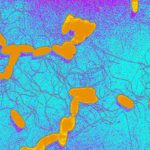Link to Pubmed [PMID] – 22737074
PLoS Pathog. 2012;8(6):e1002776
Salmonella enterica subspecies enterica is traditionally subdivided into serovars by serological and nutritional characteristics. We used Multilocus Sequence Typing (MLST) to assign 4,257 isolates from 554 serovars to 1092 sequence types (STs). The majority of the isolates and many STs were grouped into 138 genetically closely related clusters called eBurstGroups (eBGs). Many eBGs correspond to a serovar, for example most Typhimurium are in eBG1 and most Enteritidis are in eBG4, but many eBGs contained more than one serovar. Furthermore, most serovars were polyphyletic and are distributed across multiple unrelated eBGs. Thus, serovar designations confounded genetically unrelated isolates and failed to recognize natural evolutionary groupings. An inability of serotyping to correctly group isolates was most apparent for Paratyphi B and its variant Java. Most Paratyphi B were included within a sub-cluster of STs belonging to eBG5, which also encompasses a separate sub-cluster of Java STs. However, diphasic Java variants were also found in two other eBGs and monophasic Java variants were in four other eBGs or STs, one of which is in subspecies salamae and a second of which includes isolates assigned to Enteritidis, Dublin and monophasic Paratyphi B. Similarly, Choleraesuis was found in eBG6 and is closely related to Paratyphi C, which is in eBG20. However, Choleraesuis var. Decatur consists of isolates from seven other, unrelated eBGs or STs. The serological assignment of these Decatur isolates to Choleraesuis likely reflects lateral gene transfer of flagellar genes between unrelated bacteria plus purifying selection. By confounding multiple evolutionary groups, serotyping can be misleading about the disease potential of S. enterica. Unlike serotyping, MLST recognizes evolutionary groupings and we recommend that Salmonella classification by serotyping should be replaced by MLST or its equivalents.


